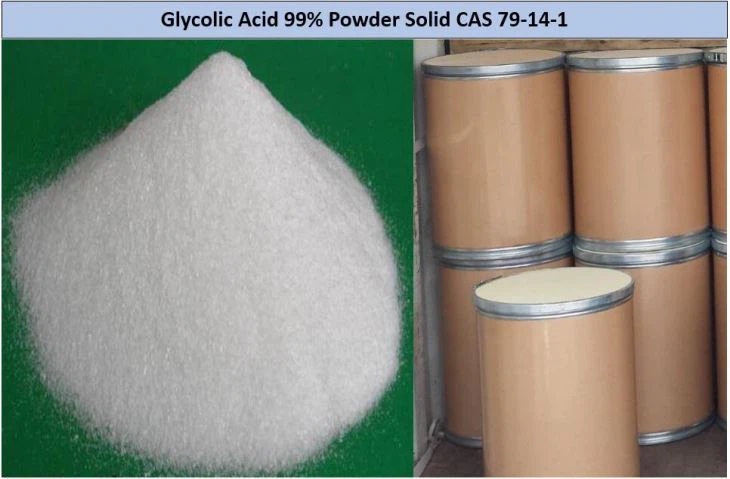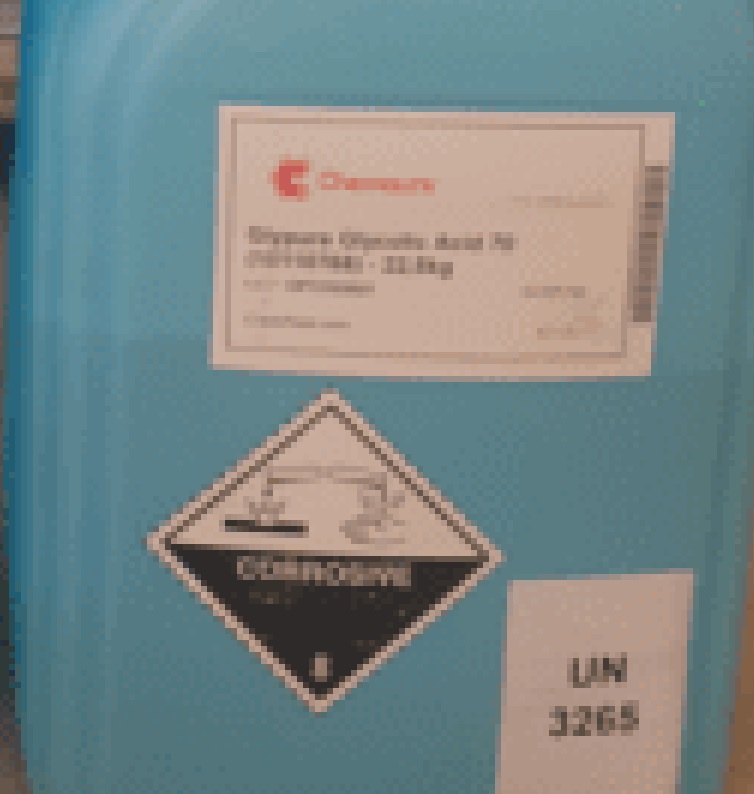We unleash your business potential by maximize the business innovation.
Send EmailGlycolic Acid , Glycolic Acid
Molecular Formula (Glycolic Acid (Glycolic Acid)): C2H4O3
Molecular Weight: 76.05 g/mol
Chemical Name: 2-Hydroxyacetic Acid
CAS Number: 79-14-1
It is also called hydroxyacetic Acid. This chemical is the smallest of the Alpha-Hydroxy acids. The chemical in this group is briefly stated as AHA.
It is an important compound that has functionality in the cosmetics sector in quality skin care products and in the field of dermatology in the pharmaceutical sector.
It has a stimulating effect on the production of collagen and elastin in the skin.
Other Names:
Acetic Acid, 2-Hydroxy
Alpha-Hydroxyacetic Acid
Glycoside
GlyPure
Glycolate
70% Concentration
Glycolic Acid Homopolymer
79-14-1
Physical and Chemical Properties:
Commercially available Alpha-Hydroxyacetic Acid is in colorless transparent and clear liquid form. Pure Glycolic Acid is in colorless hygroscopic solid form.
It has no odor.
Boiling point is 100 °C.
Melting point is 79.5 °C.
It is soluble in Acetic Acid, Methyl Alcohol, Ethyl Alcohol, Water and Acetone.
Its solubility in water is very good.
Glycolic Acid (Glycolic Acid) Usage Areas:
Dead skin cells accumulate on human skin. As a result, dry skin, acne formation and wrinkles occur on the skin. Skin care products containing Glycolic Acid are produced to prevent the accumulation of dead skin cells on the skin.
Chemicals containing 2-Hydroxyacetic Acid are used to increase the moisture level of the skin. In this way, the water binding capacity of the skin is increased. Hyaluronic Acid is found in the skin. Glycolic Acid is used to increase the water retention capacity of Hyaluronic Acid.
As people age, age spots occur. Formulas containing Glycolic Acid are used in the cosmetics sector to remove these age spots in order to look younger.
It is used to control pH.
It is an important component in the chemical grinding processes of metals.
It can be used in formulas where organic acid is needed.
It is used in the combination of products made to brighten the skin in the cosmetics sector.
Glycolic Acid-containing products produced in cream form are formulated with several different compounds. These include Salicylic Acid, Vitamin E and Oils.
It is used in the production of creams produced to treat flaky skin.
Glycolic Acid is a chemical compound that can be used to make the hair shinier, healthier and straighter by reacting with the keratin in the hair structure due to its chemical structure.
It is used in the production of chemical peels produced to treat acne on the skin.
Some hydrogels are produced to treat wounds. In the production of these hydrogels, the pH is desired to be between 4.0-7.0. It is used as an acidity regulator here.
It is used in cosmetic preparations produced to fill wrinkles on the skin, to prevent moisture loss of the skin and to increase the production of hyaluronic acid. Xanthan Gum is used as a stabilizer in this application.
Glycolic Acid in the Alpha-Hydroxyacid category, which is therapeutically effective, is used to eliminate dermatological disorders occurring on the skin. It is formulated in amphoteric composition and polymeric form. These dermatological disorders are blackheads. It also indirectly contributes to the production of collagen proteins.
It is used to increase the resistance of plants to environmental and biological stress and for plant growth. The most suitable glycolic acid concentration to prevent stress in plants is between 2-500 ppm. It can be added to the plant's leaves, soil and irrigation system.
It is used to increase the bonding strength of bioceramic root canal sealers.
Irrigation systems in the agricultural sector are clogged due to substances found in water and chemicals. It has areas of use such as preventing clogging in irrigation systems, ensuring pH control, preventing insoluble phosphate formation and preventing bacterial formation.
It is used in creams used for acne treatment.
It supports plant cultivation in the agricultural sector to promote plant growth and to maintain post-harvest quality.

